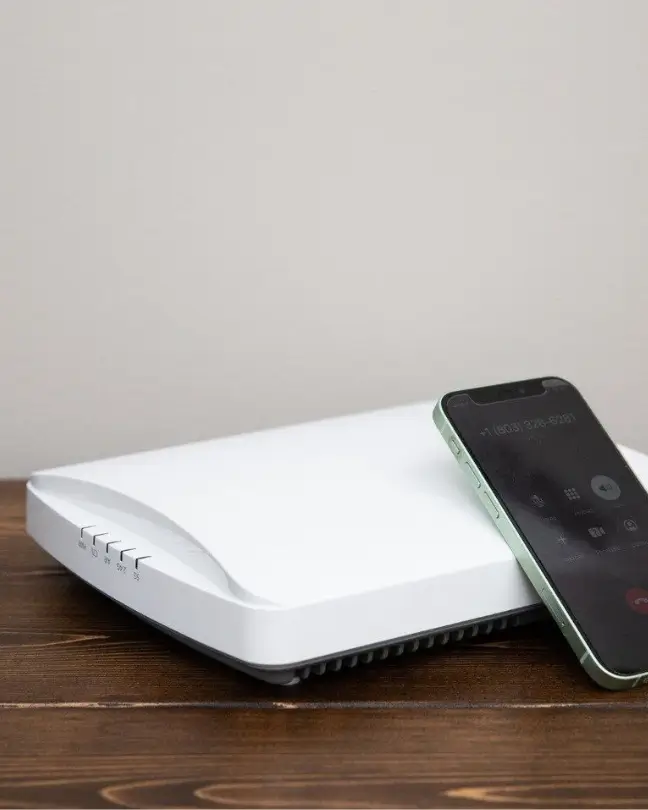Have you ever needed to access your home network while you’re away, but didn’t know how to do it safely? I know I have. Whether you want to stream your favorite shows, access your files, or just want to check in on your security cameras, to know how to connect to my home network from anywhere can be incredibly useful. In this article, I will show you how to connect to your home network from anywhere, safely and securely.
There are many ways to connect to your home network from anywhere, but not all of them are safe. Some methods are not secure and can leave your network vulnerable to attacks. That’s why it’s important to use the right tools and methods to connect to your home network. In this article, I will share with you some of the safest and most effective ways to connect to your home network from anywhere.
Basics of Remote Access
As someone who is always on the move, I understand the importance of being able to connect to my home network from anywhere. Remote access allows me to access local resources like my media server or even my desktop PC, no matter where I am.
But what exactly is remote access? Simply put, it’s the ability to access a computer or network from a remote location. This is done through a variety of methods, including Virtual Private Networks (VPNs), Remote Desktop Protocol (RDP), and port forwarding.
One of the most common ways to access your home network remotely is through a VPN. This creates a secure, encrypted connection between your remote device and your home network. Once connected, you can access your network resources as if you were physically there.
Another method is through RDP, which allows you to control your home computer from a remote location. This is useful if you need to access files or applications that are only available on your home computer.
Finally, port forwarding allows you to access specific services on your home network from the internet. For example, you can configure your router to forward incoming requests on port 80 to your web server, allowing you to access your website from anywhere.
Setting Up Your Home Network for Remote Access

Setting up remote access to your home network is easier than you might think. Here’s how to do it.
Securing Your Home Network
Before you start setting up remote access, it’s important to make sure your home network is secure. This means making sure your router is password-protected and using strong passwords for all of your devices. You should also consider setting up a Virtual Private Network (VPN) to encrypt your internet traffic and protect your data from prying eyes.
Configuring Your Router
Once your home network is secure, you can start configuring your router for remote access. There are a few different ways to do this, but one of the easiest is to use Dynamic DNS (DDNS). DDNS allows you to access your home network using a domain name instead of an IP address, which can change frequently.
To set up DDNS, you’ll need to sign up for a DDNS service and configure your router to use it. Most modern routers have built-in support for DDNS, so it should be fairly easy to set up. Once you’ve set up DDNS, you’ll be able to access your home network from anywhere using the domain name you chose.
Overall, setting up remote access to your home network is a relatively simple process that can save you a lot of hassle in the long run. By following these steps, you’ll be able to connect to your home network from anywhere in the world with ease.
How to Connect to My Home Network from Anywhere
As someone who values convenience and efficiency, I have always wanted to know how to connect to my home network from anywhere. Being able to access my local resources like a media server or even my desktop PC while I am away from home is a great way to stay productive and entertained. In this section, I will share with you three ways to connect to your home network remotely so you can enjoy the same benefits.
Using a VPN
One of the most secure ways to connect to your home network remotely is by using a VPN (Virtual Private Network). A VPN creates a secure and encrypted connection between your device and your home network, allowing you to access your local resources as if you were physically there. There are many VPN services available, both free and paid, that you can use to connect to your home network remotely.
Using Remote Desktop Software
Another way to connect to your home network remotely is by using remote desktop software. This software allows you to connect to your desktop PC or laptop from anywhere in the world using an internet connection. Once connected, you can access your files and applications as if you were sitting in front of your computer. Some popular remote desktop software includes TeamViewer, AnyDesk, and Chrome Remote Desktop.
Using Cloud-Based Solutions
If you do not want to set up a VPN or use remote desktop software, you can also use cloud-based solutions to connect to your home network remotely. Cloud-based solutions like Google Drive, Dropbox, and OneDrive allow you to store your files in the cloud and access them from anywhere in the world. You can also use cloud-based solutions to stream media from your home network to your device.
Troubleshooting Common Issues
Connecting to your home network from anywhere can be a great convenience, but it’s not always a seamless process. Here are some common issues you might encounter and how to troubleshoot them.
Connectivity Problems
One of the most common issues when connecting to your home network remotely is connectivity problems. If you’re having trouble connecting, the first thing to check is your internet connection. Make sure you’re connected to the internet and that your connection is stable. If you’re having trouble connecting to your home network specifically, try the following steps:
- Check the settings on your router to make sure remote access is enabled.
- Make sure you’re using the correct IP address and port number to connect.
- Try connecting from a different device to see if the issue is with your device specifically.
- Restart your router and device and try again.
If you’re still having trouble, it’s possible that your ISP is blocking the connection. In this case, you may need to contact your ISP to see if they can unblock the connection.
Security Issues

When accessing your home network remotely, it’s important to do so securely to protect your network, data, and privacy. Here are some common security issues you might encounter and how to address them:
- Weak passwords: Make sure you’re using a strong, unique password for your home network and any remote access tools you’re using.
- Unsecured connections: Always use a secure connection when accessing your home network remotely, such as a VPN or SSH tunnel.
- Unauthorized access: Make sure you’re only allowing authorized users to access your home network remotely. Use two-factor authentication and limit access to only the devices and services you need.
By taking these steps, you can troubleshoot common issues and ensure that your remote access to your home network is secure and reliable.
FAQ
Can I connect to my home network from anywhere?
Yes, you can connect to your home network from anywhere using remote access tools such as VPN, Dynamic DNS, or remote desktop software. However, you need to ensure that your network is secure and properly configured to prevent unauthorized access and data breaches.
What is the maximum range of Wi-Fi?
The maximum range of Wi-Fi depends on various factors such as frequency, transmission power, antenna type, and environment. Typically, Wi-Fi routers operating on the 2.4 GHz band can reach up to 150 feet indoors and 300 feet outdoors, while 5 GHz routers have a shorter range of approximately one-third of these distances.
Where is the best place to put your router?
The best place to put your router is in a central location, away from obstructions and interference sources such as walls, metal objects, and electronic appliances. It should also be elevated and positioned vertically, with the antennas facing upwards for optimal coverage.
If you liked this blog article about the topic: How to Connect to My Home Network from Anywhere, don’t forget to leave us a comment down below to tell us about your experience.
Feel free to also check out our other Articles from the category “Home Networking“



